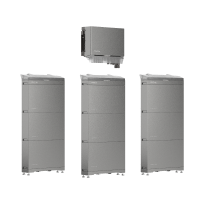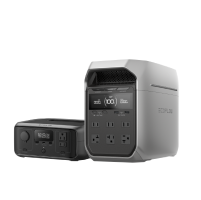What You Need to Know About the Lifepo4 Battery
If you're considering having a home battery system installed in your home, the type of battery you choose matters a great deal. Consumers have the option to buy lead-acid batteries, Nickel-Cadmium (NiCd) batteries, Nickel-Metal Hydride (NiMH) batteries and even saltwater batteries. However, in this article, we'll be looking at perhaps the best option available - the Lifepo4 battery.
Used in leading systems such as the PowerOcean Home Battery solution, Lifep04 batteries (a.k.a. Lithium Iron Phosphate (LFP) batteries) offer an attractive choice, blending safety, eco-friendliness and longevity. As a customer, it's important to understand the basics in terms of how they work and the benefits they deliver. Stay with us as we explore the subject in some depth.
What kind of product or solution are you interested in?


An Environmentally Friendly Option
While many people choose solar home energy systems for the financial savings they provide, many more do so due to wanting to play their part in the battle against climate change. As such, a huge advantage of LFP batteries is their environmental sustainability.
Unlike other technologies that rely on metals such as nickel and cobalt - the mining of which is known to be bad for workers and the environment - a typical lifepo4 battery is manufactured using much less harmful materials. The absence of these toxic metals ensures that their production, usage, and disposal result in a much lower ecological impact.
An Economically Sound Long-Term Choice
Another reason why lithium Ion batteries represent a wise choice is their economic viability over the years that they’re installed. The initial cost of the equipment may be higher than other alternatives on the market, but when you look at the ongoing energy bill cost savings, they greatly outweigh what needs to be invested upfront.
Able to efficiently store excess solar energy and allow people to use it during peak tariff times of the day, they help to keep your bills low - at a time when most people’s bills are on an upward incline. Also, the stable performance they offer, even under a variety of temperature and load conditions, means that maintenance is typically minimal.
How Do Lifepo4 Battery Chargers Work?
Most people know that solar panels collect the energy that’s generated by the sun, but what happens from that point onwards? Well, to begin with, you'll usually have a hybrid solar PV system, and its integrated inverter will first need to convert the collected AC power into usable DC electricity. It's then passed onto the Lifepo4 battery charger. So, how does this happen?
A charger of this type is able to safely deliver electricity to your Lifepo4 battery in such a way that it becomes fully charged without becoming damaged. Firstly, it supplies a steady stream of constant power, quickly filling up the battery to a certain set point. Then, as the battery approaches being full, the charger switches to a mode that more carefully controls the flow of electricity.
This means that the last part of charging happens more gently and prevents overcharging, which can work to shorten the battery's lifespan. Carefully adjusting flow when needed, it's an intelligent failsafe that protects your investment and safeguards its long-term efficiency.
Other Features You Might Expect
The charging process shown above represents the least you can expect from a Lifepo4 battery charger, and depending on the brand you choose, you can also expect a range of other features that ensure the system works at optimal levels. They include:
- Temperature monitoring - some of the more advanced lifepo4 battery chargers will also have temperature monitoring, which adjusts the flow of electricity based on the battery's temperature. This offers extra protection against overheating, which can be helpful during extremely hot days.
- Usage Pattern/Condition Adjustments - you can also expect some chargers to be equipped with smart technology that optimises charging according to the battery's condition and based on your usage patterns to promote performance and longevity.
- Overvoltage/Overcurrent/Short-circuit Protection - other useful integrated safety mechanisms are often included in some chargers for LFP batteries, protecting them against short circuits, overcurrents and overvoltages - ensuring no user injury or system damage occurs.
Usually, LFP batteries have a nominal voltage of around 3.2-3.3 volts per cell and a fully charged voltage of approximately 3.6-3.65 volts per cell. The chargers inside are naturally designed to be compatible with these specifications to ensure the battery operates at maximum levels throughout its life.
Is a Lifepo4 Battery the Same as a Lithium Battery?
It's commonplace for people to confuse the terms ‘lithium battery' and 'lithium-ion battery', and many wrongly use them interchangeably. The reality is that they are two very distinct types of batteries with very different uses and characteristics.
- Lithium-Ion Batteries - as discussed in this article, lithium-ion batteries feature an anode and a cathode, which allows ions to move between the electrodes and allow both charging and discharging to occur. They can be used multiple times and are used in portable electronics, electric vehicles, and, of course, renewable home energy systems.
- Lithium Batteries - on the other hand, lithium batteries contain the metal in its pure metallic state in the form of an anode. The big difference is that there's no cathode, meaning they're single-use and can't be recharged. That's why you'll find them in long-term, low-use devices like calculators and watches. They also pose a greater risk of overheating and catching fire when improperly disposed of.
.png)
EcoFlow Industrial-grade LiFePO4 batteries
So, What is a Lifepo4 Leisure Battery?
Due to their usefulness and versatility, renewable energy systems aren't the only place you'll find Lifepo4 batteries being used. As such, the Lifepo4 Leisure battery is a type that shares the same features as their home battery counterparts but is tailored for different applications.
Here are a few key differences between a standard Lifepo4 battery and the leisure kind:
- Designed for recreational use: LFP leisure batteries are specifically manufactured for recreational and leisure use, as they’re usually installed in caravans, boats, and motorhomes. They’re optimised for deep cycling because they’re charged and discharged much more often.
- Standard LFP batteries, on the other hand, focus more on higher power output, as opposed to deep-discharge cycles, i.e. running the battery down to empty before being recharged.
- A range of different sizes: Another major difference is the restricted range of sizes that leisure Lifepo4 batteries come in. That’s because they’re designed for use with specific equipment and vehicles rather than for general use.
- Built to handle harsher conditions - While a Lifepo4 battery in a home energy setup is static, a leisure variant is intended for use in varying outdoor conditions. As such, they’re often built to handle harsher conditions, with rugged casings that protect against dust, moisture and mechanical shock. The truth is, they need it, whereas home batteries don’t.
Essentially, standard and leisure LFP batteries are one and the same thing, but the configuration of each is tailored to offer optimal efficiency in the given scenario.
Where Can You Dispose of Lithium-ion Batteries?
As the type of eco-conscious customer who would consider renewable energy solutions, it’s important to know how to ecologically dispose of lithium-ion batteries at the end of their lifecycle. In the United Kingdom, there are certain rules that you should follow due to the chemical components found inside. Proper disposal is crucial to ensure no environmental harm is caused.
Don’t Dispose of in Regular Waste
It’s important to state that a LIfep04 battery should never be thrown away with regular household rubbish or recycling. Even though they’re not as toxic as other battery types, they still need to be handled properly during disposal. The proper location is one of the many designated recycling points across the UK.
Although LFP batteries of this type do vary, they’re usually the size of a small suitcase, meaning they need specialist handling. The following options are open to you.
- Local Recycling Centres: Many local council recycling centres are equipped to allow people to drop off large batteries, including those used for home energy storage. That said, it’s advisable to contact the centre beforehand to confirm they can accept your specific type of battery.
- Council Waste Collection Services: Some local councils also offer collection services for large or hazardous items. Again, it’s a case of contacting your local council to inquire if they are able to offer this kind of service.
- Battery Recycling Services: Some private companies specialise in recycling batteries, especially larger ones used in home energy systems or electric vehicles. These services may offer collection or drop-off options.
- Manufacturer Take-Back Programs: Depending on the battery manufacturer you buy from, they may offer a take-back program for end-of-life products. You should check where you purchased the battery to see if they provide this service.
Whichever way you choose to dispose of your LifePo4 battery, it's essential to prepare it for safe transportation. This means putting some tape on the terminals to prevent a short circuit and inspecting the battery for damages or leaks. If possible, put some protective gloves on before moving it and place it in a box that can hold its weight. Also, clearly mark the box as containing a LifePo4 battery.
The Lifepo4 Battery - What Makes Home Battery Systems So Effective
The LHP battery is the silent hero that makes modern home battery systems so good at what they do - saving you money and allowing you to use energy on your terms. For all the reasons we covered here today, they represent the go-to option for environmentally-conscious homeowners who want to move from standard solar PV systems to solar battery storage.
With a long life expectancy and requiring very little maintenance, a system powered by an LFP battery can give you true energy independence at a time when fuel bills are only heading one way - up!
So, if it sounds like a move you'd like to make and you want to learn more about what's possible, we recommend you look around our website, which gives you all the information you need. Alternatively, if you'd like to discuss your requirements with us directly, head to our homepage and click 'Order Now' for a free quote tailored to your needs.



